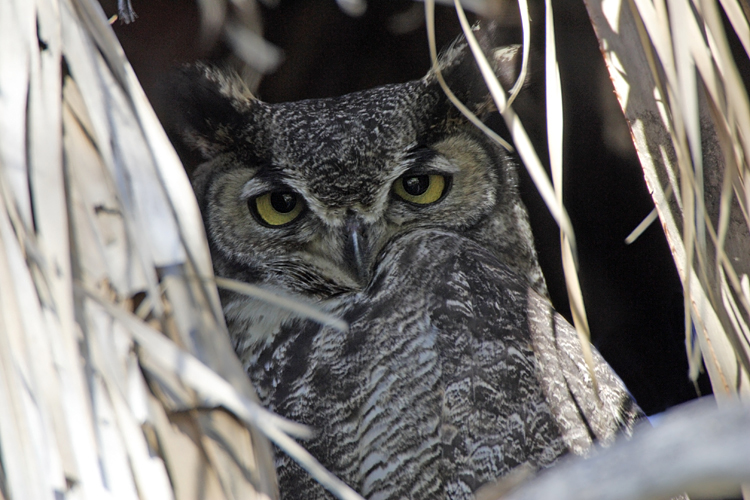
Date: 2008-02-15
Lens: Canon 600mm IS F4 + 1.4x II Converter

 Great Horned Owl
Bubo virginianus
Great Horned Owl
Bubo virginianus
 Description
Description
The Great Horned Owl is the largest and best known of the American "eared" owls. It feeds on a large variety of animals, including grouse, rabbits, beetles, lizards, frogs, birds (including crows), ducks, and other owls. This bird can live for more than 12 years; some captive birds have lived to 29 years old.
The genus Bubo (BEW-boh) is from the Latin word meaning "owl" or from the Greek word for "eagle owl" used by the great 1st century Roman naturalist Pliny (Gaius Plinius Secundus). Great horned owls are related to the eagle owl of Eurasia. The species name virginianus means "of Virginia", which is where the first Great Horned Owl specimen was collected. The common name "horned owl" comes from the large ear tufts.
Mottled gray, brown, and black upperparts. Pale buff underparts with brown barring. Reddish-brown face bordered with black. White throat. Large ear tufts. Yellow eyes. Dark bill. Sexes similar. 20 to 25 inches in length.
Forests, deserts, open country, swamps, and parks. The range of this owl almost covers the entire North American continent.
 Nesting
Nesting2-3 white eggs. The eggs have a 26-35 day incubation period. Fledging occurs in 35 days. No nest is built. The eggs are typcially placed on the bare surface of a cliff, cave, or just on the ground. Sometimes abandoned hawk, crow, or heron nests are used.